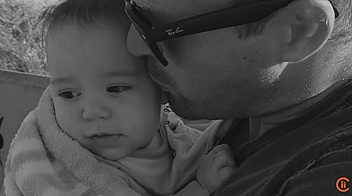Still Face Experiment with Dads
"The still face experiment" developed by Dr. Ed Tronick in the 1970s asks caregivers to engage in normal responsive interactions, then become unresponsive (put on a "still face") for a few minutes, and then return to their normal repsonsive interactions with the child. During the period when the caregiver is unresponsive, the child tries to get the caregiver's attention and then failing to do so begins to show signs of physical and emotional distress. When the caregiver becomes responsive again we see the connection between the caregiver and child restored. The experiment shows how much babies depend on their caregivers' responses to help them feel safe, trust the people in their life, and explore the world.This video shows the Still Face Experiment with dads. Watch this video to listen to the father's reflect on their experience of the experiment: https://www.youtube.com/watch?v=rLNiXnJccUQ
1. What changes do you observe in the children when their fathers are unresponsive (have the still face)?
2. In this example, the fathers and children returned to "normal" when the fathers became responsive again. What if the children had stayed distressed after the fathers became repsonsive? What would this imply about the caregiver-child relationship?
3. Imagine if the "still face" portion of the experiment was the child's everyday experience. That is, the caregiver was non-responsive for extended periods of time at home. How would this impact the child's health and well-being? the caregiver-child relatioship?
Related links:
Length: 4 min 28 sec
Organization: Children's Institute
Language: English
Year: 2016
Web link: https://youtu.be/7Pcr1Rmr1rM?si=Mi6-3v0zPwN9qfBz





